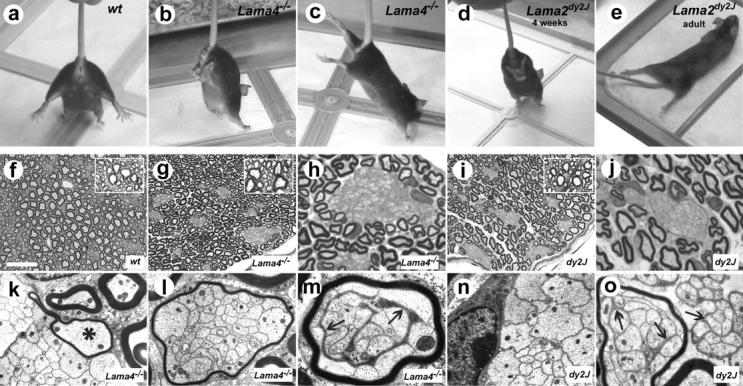Figure 1.

Amyelinating peripheral neuropathies in Lama4 −/− and dy2J mice. (a–d) Overlapping postural defects. When suspended, wild type (a) mice extend limbs downward, whereas Lama4 −/− mice retract and then extend hindlimbs backward (b and c). dy2J mice retract hindlimbs at juvenile ages (d, 4 wk), before the onset of permanent contractures (e, 3 mo). (f–j) Toluidine blue–stained resin sections of adult control (f), Lama4 −/− (g and h), and dy2J (i and j) sciatic nerves at low (f, g, and i) and high (h and j) magnification. Bundles of unsheathed axons are present in mutants, but not controls. (k–o) Electron micrographs show most bundles lack intervening Schwann cell processes. Some Lama4 −/− Schwann cells along large bundles establish promyelinating relations with single axons (k, asterisk), but usually myelinate small bundles altogether (l and m; Table I). Some polyaxonal myelination included intervening Schwann cell processes (m, arrows), possibly from adjacent cells along the nerve. In dy2J, polyaxonal myelination was rare (o, left), but large rafts of partially defasciculated, unmyelinated, mixed caliber fibers were common (o, right). Bar in f, 38 μm (f, g, and i); 15 μm (h and j); 3 μm (k, l, n, and o); 1.8 μm (m).
